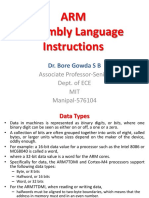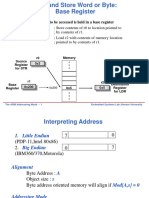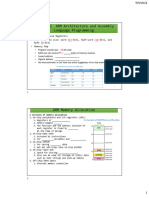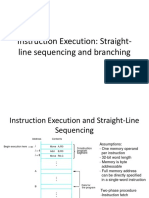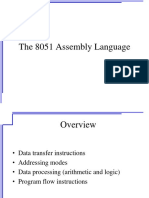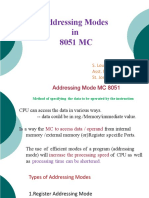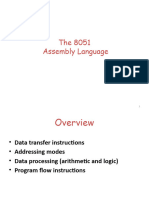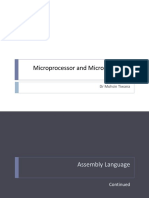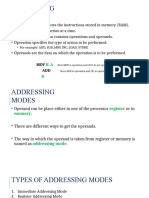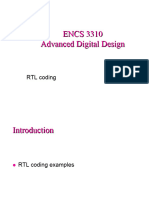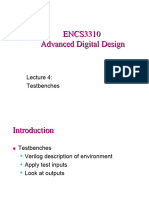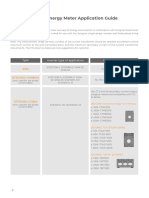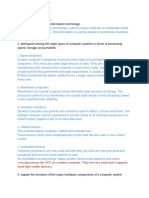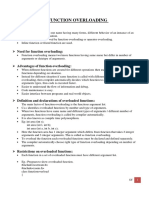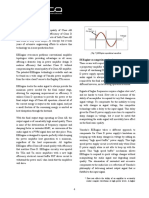0% found this document useful (0 votes)
73 views11 pagesExp4 - ARM Addressing Modes
The document discusses various addressing modes in ARM including:
1) Register indirect addressing with offset loads data from the memory address held in a register plus an offset.
2) Autoindexing pre-indexed mode loads data and updates the register pointer by adding an offset before accessing the next element of an array.
3) Autoindexing post-indexed mode loads data and updates the register pointer by adding an offset after accessing the element.
An example program demonstrates using post-indexing mode to calculate the sum of an array.
Uploaded by
Abdalrhman juberCopyright
© © All Rights Reserved
We take content rights seriously. If you suspect this is your content, claim it here.
Available Formats
Download as DOCX, PDF, TXT or read online on Scribd
0% found this document useful (0 votes)
73 views11 pagesExp4 - ARM Addressing Modes
The document discusses various addressing modes in ARM including:
1) Register indirect addressing with offset loads data from the memory address held in a register plus an offset.
2) Autoindexing pre-indexed mode loads data and updates the register pointer by adding an offset before accessing the next element of an array.
3) Autoindexing post-indexed mode loads data and updates the register pointer by adding an offset after accessing the element.
An example program demonstrates using post-indexing mode to calculate the sum of an array.
Uploaded by
Abdalrhman juberCopyright
© © All Rights Reserved
We take content rights seriously. If you suspect this is your content, claim it here.
Available Formats
Download as DOCX, PDF, TXT or read online on Scribd
/ 11




